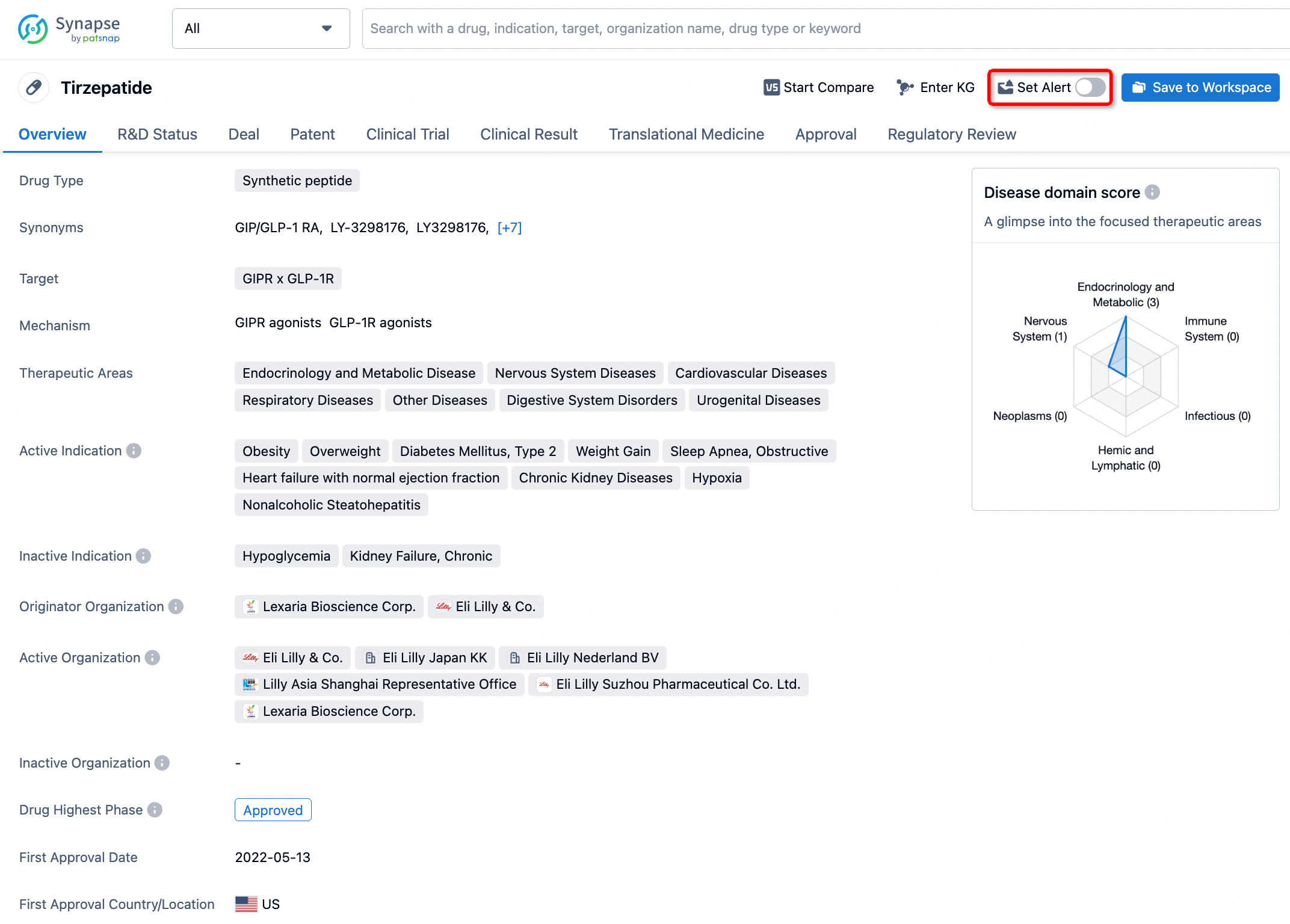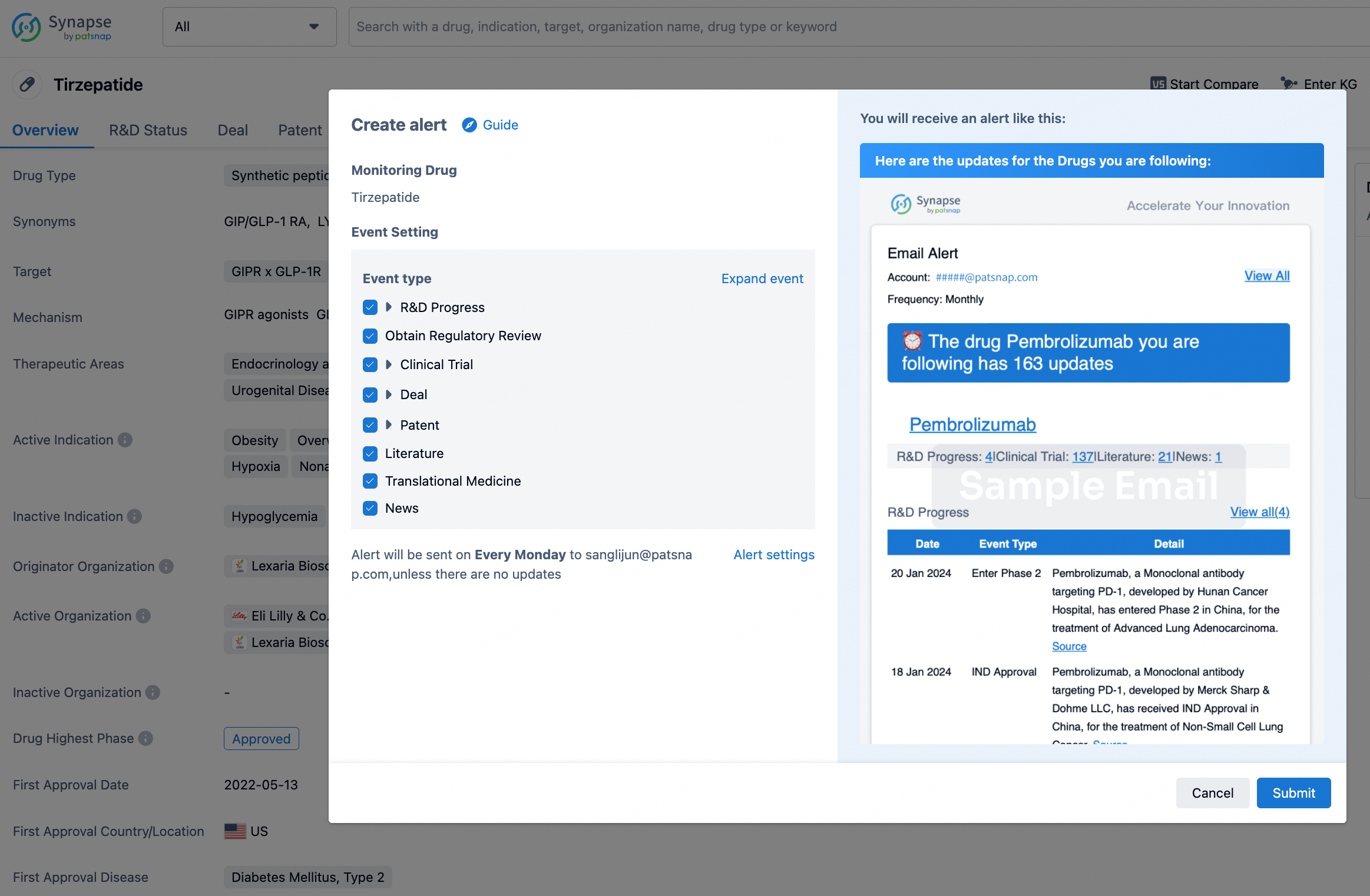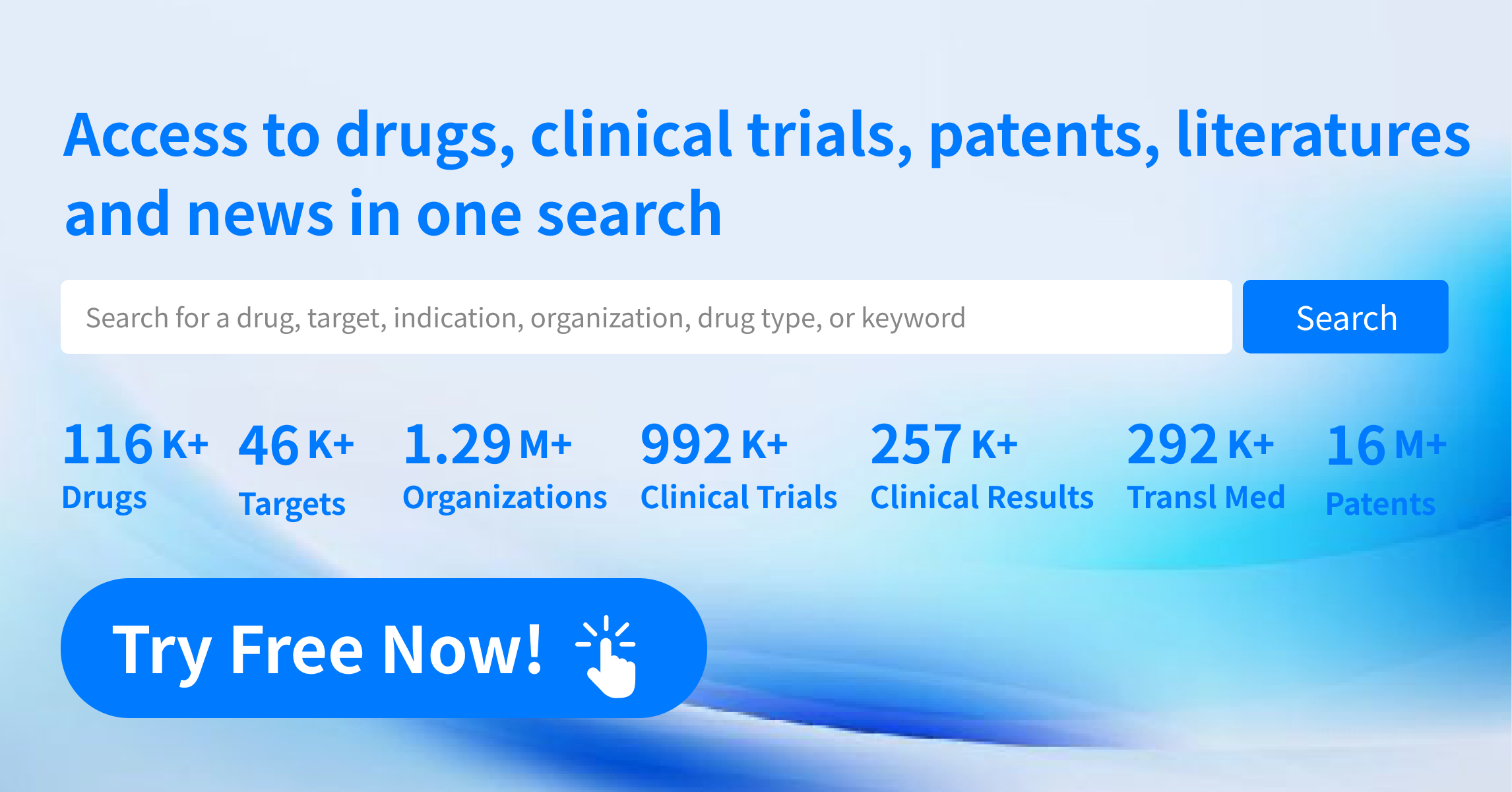Request Demo
What is Sertindole used for?
17 June 2024
Sertindole is an atypical antipsychotic medication primarily used for the treatment of schizophrenia. It is marketed under various trade names, including Serdolect, Serlect, and Sertoril. Originally developed by the Danish pharmaceutical company Lundbeck A/S, Sertindole has garnered attention for its unique profile among antipsychotic medications. Unlike many of its counterparts, Sertindole is distinguished by its relatively favorable side effect profile, particularly concerning extrapyramidal symptoms (EPS), which are less common with its usage.
Schizophrenia is a chronic, severe mental disorder that affects how a person thinks, feels, and behaves. People with schizophrenia may seem like they have lost touch with reality, which can be distressing for them and for those around them. The primary indications for Sertindole use are the management and alleviation of schizophrenia symptoms, such as hallucinations, delusions, disorganized thinking, and social withdrawal.
Since its approval, Sertindole has undergone extensive clinical research and trials. While it was initially withdrawn from the market due to concerns over cardiac side effects, subsequent studies and re-evaluations have led to its reintroduction in several countries. The drug is currently included in treatment guidelines in certain regions, though it remains a second-line treatment due to its cardiovascular risks.
Sertindole's mechanism of action is quite complex and involves several neurotransmitter systems in the brain. Primarily, Sertindole acts as an antagonist at dopamine D2 receptors, which plays a significant role in reducing the positive symptoms of schizophrenia, such as hallucinations and delusions. However, unlike traditional antipsychotics that can cause severe motor side effects because of significant dopamine blockade, Sertindole's action is more selective.
Additionally, Sertindole has a high affinity for serotonin 5-HT2A receptors, acting as an antagonist. This action is believed to contribute to the drug's efficacy in alleviating negative symptoms and cognitive deficits associated with schizophrenia, such as social withdrawal and impaired executive function. By balancing dopamine and serotonin neurotransmission, Sertindole offers a dual mechanism that enhances its therapeutic profile.
Moreover, Sertindole has moderate affinity for alpha-1 adrenergic receptors, which influences vascular smooth muscle tone and can lead to changes in blood pressure. Its interaction with these receptors might explain some of the cardiovascular side effects observed in patients, particularly concerning heart rate and QT interval prolongation.
Sertindole is administered orally, usually in the form of tablets. The drug is typically taken once daily, with or without food. The starting dose is often low, and the dosage is gradually increased based on the patient's response and tolerance. A common regimen might start at 4 mg per day, with increments of 4 mg every 4 to 5 days, until an effective dose, generally between 12 mg and 20 mg per day, is reached.
The onset of action for Sertindole can vary between individuals. Some patients may begin to notice improvements in their symptoms within a few days to a week of starting the treatment, although it may take several weeks to achieve the full therapeutic effect. Consistent medication adherence is crucial for achieving and maintaining the desired outcomes.
As with any medication, Sertindole can cause side effects, which vary in severity and frequency among individuals. Common side effects include weight gain, headaches, dry mouth, and nasal congestion. Some patients may experience somnolence or insomnia. Gastrointestinal issues, such as constipation, can also occur.
One of the more serious side effects associated with Sertindole is its potential to prolong the QT interval on an electrocardiogram (ECG), which can increase the risk of a potentially fatal heart rhythm condition known as Torsades de Pointes. Due to this risk, it is recommended that patients undergo regular ECG monitoring and electrolyte balance checks, particularly during the initial stages of treatment and when the dose is increased.
Contraindications for Sertindole include a history of significant cardiovascular disease, such as arrhythmias or congenital long QT syndrome. It is also contraindicated in patients with severe hepatic impairment. Caution is advised when prescribing Sertindole to elderly patients or those with a history of seizures.
Several other drugs can interact with Sertindole, potentially altering its effects or increasing the risk of adverse reactions. Co-administration with other medications that prolong the QT interval is particularly concerning, as it can amplify the risk of cardiac events. Examples of such medications include certain antibiotics (like erythromycin), antifungals (such as ketoconazole), and other antipsychotics (like thioridazine).
Additionally, drugs that influence the liver enzyme CYP3A4, which is responsible for the metabolism of Sertindole, can affect its plasma concentrations. CYP3A4 inhibitors (such as ketoconazole, ritonavir, and clarithromycin) can increase sertindole levels, while CYP3A4 inducers (such as carbamazepine, phenytoin, and rifampicin) can decrease its effectiveness.
Patients should avoid alcohol while taking Sertindole, as it can exacerbate some side effects, such as drowsiness and dizziness. It is also essential to inform healthcare providers of all medications and supplements being taken to manage potential interactions effectively.
In conclusion, Sertindole is a valuable option for treating schizophrenia, particularly for patients who might be susceptible to extrapyramidal symptoms associated with other antipsychotics. Its dual action on dopamine and serotonin receptors enhances its efficacy in managing both positive and negative symptoms of the disorder. However, careful consideration of its side effect profile, particularly regarding cardiovascular risks, is essential. Regular monitoring and a tailored approach to dosage can help mitigate risks and maximize therapeutic benefits. As with any medication, ongoing research and post-market surveillance are crucial to refining its use and ensuring patient safety.
Schizophrenia is a chronic, severe mental disorder that affects how a person thinks, feels, and behaves. People with schizophrenia may seem like they have lost touch with reality, which can be distressing for them and for those around them. The primary indications for Sertindole use are the management and alleviation of schizophrenia symptoms, such as hallucinations, delusions, disorganized thinking, and social withdrawal.
Since its approval, Sertindole has undergone extensive clinical research and trials. While it was initially withdrawn from the market due to concerns over cardiac side effects, subsequent studies and re-evaluations have led to its reintroduction in several countries. The drug is currently included in treatment guidelines in certain regions, though it remains a second-line treatment due to its cardiovascular risks.
Sertindole's mechanism of action is quite complex and involves several neurotransmitter systems in the brain. Primarily, Sertindole acts as an antagonist at dopamine D2 receptors, which plays a significant role in reducing the positive symptoms of schizophrenia, such as hallucinations and delusions. However, unlike traditional antipsychotics that can cause severe motor side effects because of significant dopamine blockade, Sertindole's action is more selective.
Additionally, Sertindole has a high affinity for serotonin 5-HT2A receptors, acting as an antagonist. This action is believed to contribute to the drug's efficacy in alleviating negative symptoms and cognitive deficits associated with schizophrenia, such as social withdrawal and impaired executive function. By balancing dopamine and serotonin neurotransmission, Sertindole offers a dual mechanism that enhances its therapeutic profile.
Moreover, Sertindole has moderate affinity for alpha-1 adrenergic receptors, which influences vascular smooth muscle tone and can lead to changes in blood pressure. Its interaction with these receptors might explain some of the cardiovascular side effects observed in patients, particularly concerning heart rate and QT interval prolongation.
Sertindole is administered orally, usually in the form of tablets. The drug is typically taken once daily, with or without food. The starting dose is often low, and the dosage is gradually increased based on the patient's response and tolerance. A common regimen might start at 4 mg per day, with increments of 4 mg every 4 to 5 days, until an effective dose, generally between 12 mg and 20 mg per day, is reached.
The onset of action for Sertindole can vary between individuals. Some patients may begin to notice improvements in their symptoms within a few days to a week of starting the treatment, although it may take several weeks to achieve the full therapeutic effect. Consistent medication adherence is crucial for achieving and maintaining the desired outcomes.
As with any medication, Sertindole can cause side effects, which vary in severity and frequency among individuals. Common side effects include weight gain, headaches, dry mouth, and nasal congestion. Some patients may experience somnolence or insomnia. Gastrointestinal issues, such as constipation, can also occur.
One of the more serious side effects associated with Sertindole is its potential to prolong the QT interval on an electrocardiogram (ECG), which can increase the risk of a potentially fatal heart rhythm condition known as Torsades de Pointes. Due to this risk, it is recommended that patients undergo regular ECG monitoring and electrolyte balance checks, particularly during the initial stages of treatment and when the dose is increased.
Contraindications for Sertindole include a history of significant cardiovascular disease, such as arrhythmias or congenital long QT syndrome. It is also contraindicated in patients with severe hepatic impairment. Caution is advised when prescribing Sertindole to elderly patients or those with a history of seizures.
Several other drugs can interact with Sertindole, potentially altering its effects or increasing the risk of adverse reactions. Co-administration with other medications that prolong the QT interval is particularly concerning, as it can amplify the risk of cardiac events. Examples of such medications include certain antibiotics (like erythromycin), antifungals (such as ketoconazole), and other antipsychotics (like thioridazine).
Additionally, drugs that influence the liver enzyme CYP3A4, which is responsible for the metabolism of Sertindole, can affect its plasma concentrations. CYP3A4 inhibitors (such as ketoconazole, ritonavir, and clarithromycin) can increase sertindole levels, while CYP3A4 inducers (such as carbamazepine, phenytoin, and rifampicin) can decrease its effectiveness.
Patients should avoid alcohol while taking Sertindole, as it can exacerbate some side effects, such as drowsiness and dizziness. It is also essential to inform healthcare providers of all medications and supplements being taken to manage potential interactions effectively.
In conclusion, Sertindole is a valuable option for treating schizophrenia, particularly for patients who might be susceptible to extrapyramidal symptoms associated with other antipsychotics. Its dual action on dopamine and serotonin receptors enhances its efficacy in managing both positive and negative symptoms of the disorder. However, careful consideration of its side effect profile, particularly regarding cardiovascular risks, is essential. Regular monitoring and a tailored approach to dosage can help mitigate risks and maximize therapeutic benefits. As with any medication, ongoing research and post-market surveillance are crucial to refining its use and ensuring patient safety.
How to obtain the latest development progress of all drugs?
In the Synapse database, you can stay updated on the latest research and development advances of all drugs. This service is accessible anytime and anywhere, with updates available daily or weekly. Use the "Set Alert" function to stay informed. Click on the image below to embark on a brand new journey of drug discovery!
AI Agents Built for Biopharma Breakthroughs
Accelerate discovery. Empower decisions. Transform outcomes.
Get started for free today!
Accelerate Strategic R&D decision making with Synapse, PatSnap’s AI-powered Connected Innovation Intelligence Platform Built for Life Sciences Professionals.
Start your data trial now!
Synapse data is also accessible to external entities via APIs or data packages. Empower better decisions with the latest in pharmaceutical intelligence.


